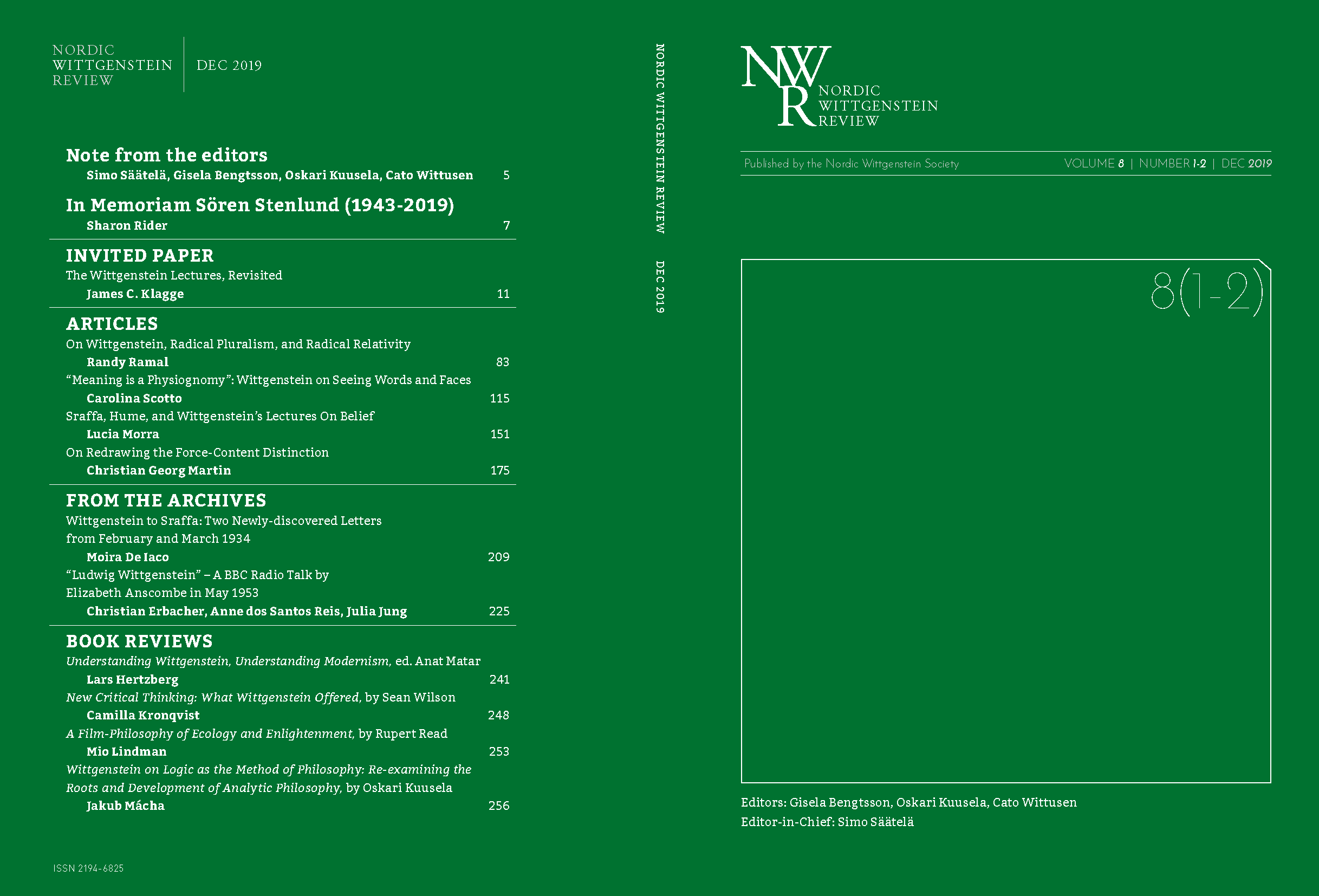"Meaning is a Physiognomy": Wittgenstein on Seeing Words and Faces
DOI:
https://doi.org/10.15845/nwr.v8i1.3487Keywords:
physiognomy - seeing aspects - experience of meaning -seeing meaningsAbstract
The second part of Philosophical Investigations and other contemporary writings contain abundant material dedicated to the examination of visual perception, along the lines of similarities and differences manifested in the use of concepts such as “seeing as”, “seeing aspects”, “noticing the aspect”, “aspect blindness”, among other, related ones. However, the application of these concepts to phenomena such as face perception and word perception has not received proper attention in the literature. Our interest lies in identifying the features pertaining facial perception and recognition of its content in order to understand how and to what extent they contribute to shed light on perceptual (and experiential) relationships we have with language, in particular with its written form. In other words, we will try to show in what ways the “phenomenology of facial perception” or “physiognomy” helps to understand the “experience of meaning” and the “phenomenology of reading”. My interpretative hypothesis is that, in Wittgenstein’s view, the features shared by face and word perception are more profound than a mere analogy, and that, in the case of words, these features can explain specific semantic (perhaps, semantic-pragmatic) phenomena that should be included in an appropriate reconstruction of the varieties of use in natural languages.
Downloads
Published
How to Cite
Issue
Section
License
Copyright (c) 2019 Carolina Scotto

This work is licensed under a Creative Commons Attribution 4.0 International License.
NWR uses the Creative Commons license CC-BY.
Vol. 1-3 used CC-BY-NC-SA. The collected works copyright ownership for Vol. 1-2 were shared by Nordic Wittgenstein Society and ontos Verlag/De Gruyter.








